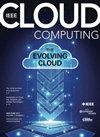预生产部署:云原生集成测试
Q1 Computer Science
引用次数: 1
摘要
基于云的系统的微服务架构被扩展为不仅要求每个松散耦合的组件可以独立部署,而且还要求为每个组件提供独立的路由。它支持金丝雀部署、绿/蓝部署和回滚。在将组件发布到生产流量之前,可以将临时和系统集成测试流量定向到组件。前端代码通过使用JS包的服务器端渲染包含在这个体系结构中。集成测试环境是通过使用适当的隔离级别,将生产前部署与生产部署并排创建的。在成功的集成测试运行之后,预生产组件就可以准确地与产品一起工作了。为了隔离,测试流量使用每天从生产数据库复制的临时数据库,从而省略敏感数据。安全和保障问题以一种有针对性的方式处理,而不是单一地处理。这种架构可以很好地适应组织规模;对集成测试更有效;并且比传统方法更符合敏捷业务实践。本文章由计算机程序翻译,如有差异,请以英文原文为准。
Preproduction Deploys: Cloud-Native Integration Testing
The microservice architecture for cloud-based systems is extended to not only require each loosely coupled component to be independently deployable, but also to provide independent routing for each component. This supports canary deployments, green/blue deployments and roll-back. Both ad hoc and system integration test traffic can be directed to components before they are released to production traffic. Front-end code is included in this architecture by using server-side rendering of JS bundles. Environments for integration testing are created with preproduction deploys side by side with production deploys using appropriate levels of isolation. After a successful integration test run, preproduction components are known to work with production precisely as it is. For isolation, test traffic uses staging databases that are copied daily from the production databases, omitting sensitive data. Safety and security concerns are dealt with in a targeted fashion, not monolithically. This architecture scales well with organization size; is more effective for integration testing; and is better aligned with agile business practices than traditional approaches.
求助全文
通过发布文献求助,成功后即可免费获取论文全文。
去求助
来源期刊

IEEE Cloud Computing
Computer Science-Computer Networks and Communications
CiteScore
11.20
自引率
0.00%
发文量
0
期刊介绍:
Cessation.
IEEE Cloud Computing is committed to the timely publication of peer-reviewed articles that provide innovative research ideas, applications results, and case studies in all areas of cloud computing. Topics relating to novel theory, algorithms, performance analyses and applications of techniques are covered. More specifically: Cloud software, Cloud security, Trade-offs between privacy and utility of cloud, Cloud in the business environment, Cloud economics, Cloud governance, Migrating to the cloud, Cloud standards, Development tools, Backup and recovery, Interoperability, Applications management, Data analytics, Communications protocols, Mobile cloud, Private clouds, Liability issues for data loss on clouds, Data integration, Big data, Cloud education, Cloud skill sets, Cloud energy consumption, The architecture of cloud computing, Applications in commerce, education, and industry, Infrastructure as a Service (IaaS), Platform as a Service (PaaS), Software as a Service (SaaS), Business Process as a Service (BPaaS)
 求助内容:
求助内容: 应助结果提醒方式:
应助结果提醒方式:


